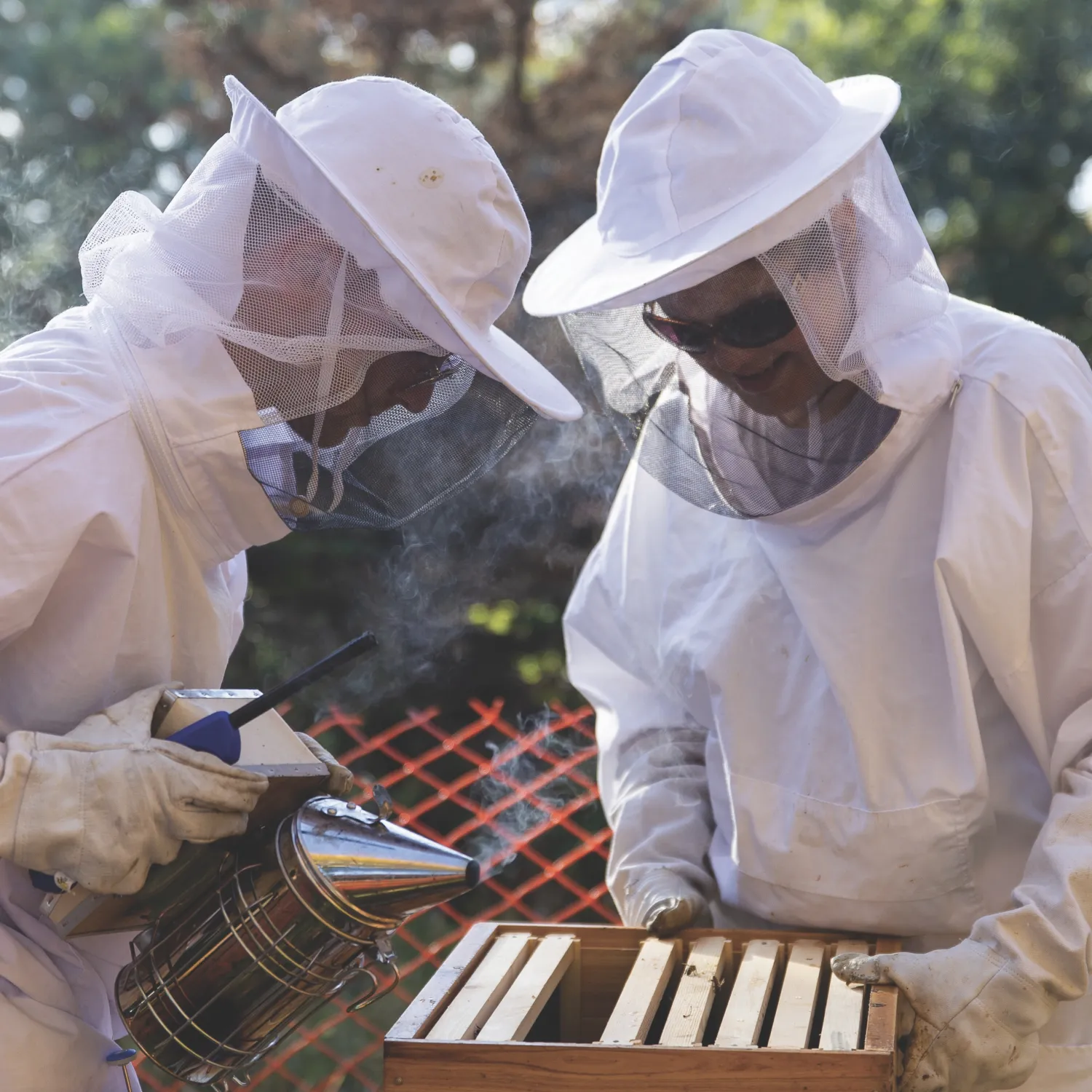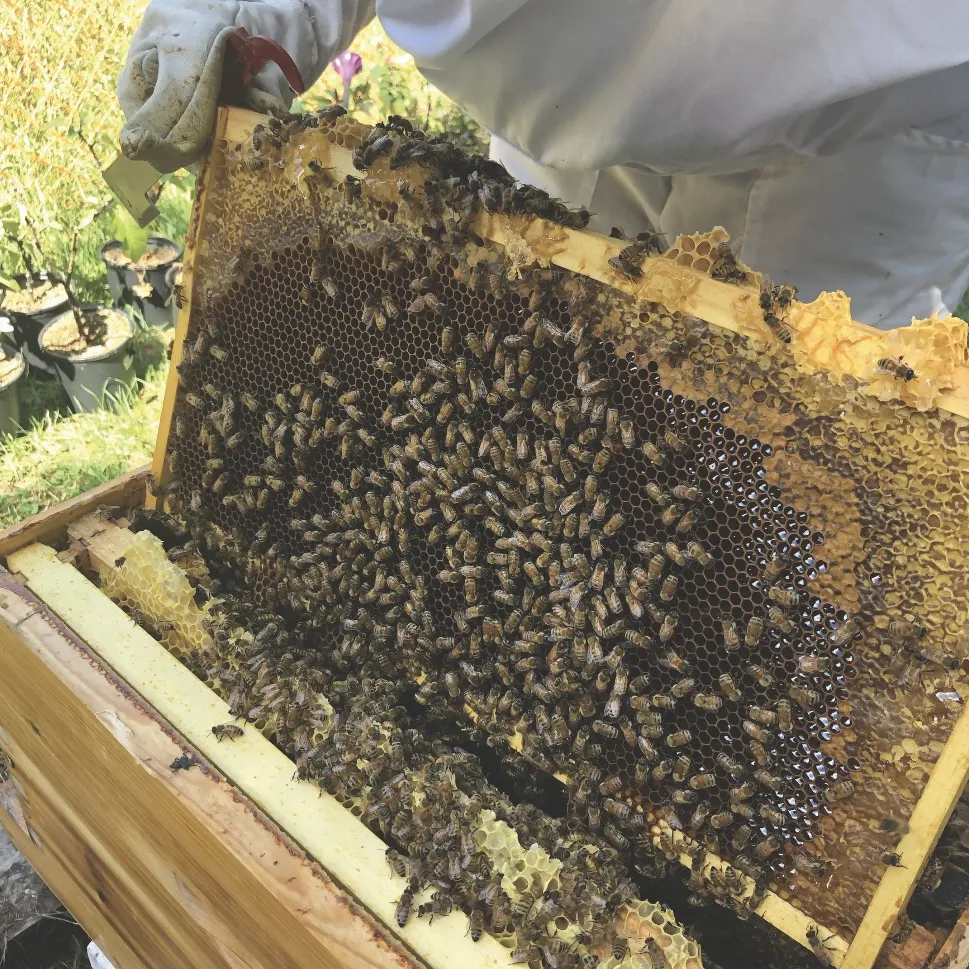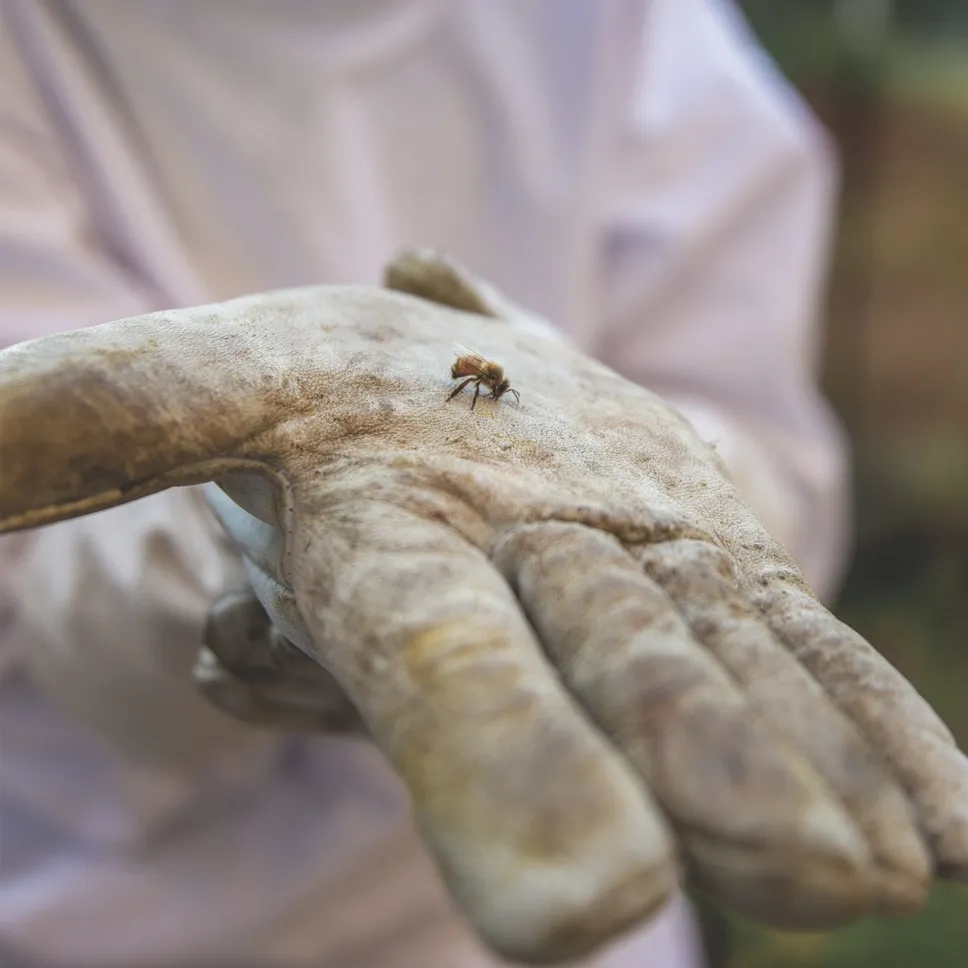Saving the Bees
When student Dominick Dotson approached NMU Medicinal Plant Chemistry Professor Maris Cinelli '06 BS to work with him as a faculty mentor to study bees and what plant compounds move from nectar and pollen into honey, she was definitely buzzed to team up. They both happened to be interested in learning beekeeping.
Bees are dying globally,” said Dotson, a McNair Scholar. “I like the opportunity to try to build them back up, and attempt to give back to the area’s environment. It’s crazy that they are dying out. They do the majority of the globe’s pollinating. They pollinate about 30 percent of our food plants.
“Dom came with this idea and we combined it with some plants I study in my research lab,” said Cinelli. “It’s important because some toxic compounds may transfer into honey and kill people or animals. The thing that also drew me is that bees are adorable!”
Before long, with the help of a grant from the Michigan Botanical Foundation, and fellow McNair Scholar Delaney Anderson, they set up a three-hive apiary on campus, near the Public Safety building and Tourist Park.
They created a closed systems through the use of netted tents, with varying populations of plants in each of the three hive areas: native blue catmint; native white yarrow; and a foreign ornamental nightshade (which can be poisonous to humans). All had supplemental sugar water. The researchers would sit for hours and count pollination and foraging events for each test site (not without a few stings). They did observe the bees going to the nightshade more often than some other species. “That’s a problem when they are preferring exotic ornamental plants over native species,” said Cinelli.
Bees typically travel up to three miles to forage, and otherwise only leave the nest to go to the bathroom.
Dom, Delaney and other Chemistry 420 students are now using LC/MS and other methods to detect alkaloids in the honey to see what trace chemicals may get transferred from the food sources. If so, does it affect the bees’ metabolic process, and in turn, does their metabolism change any existing toxins? They also harvested nectar and pollen from the flowers and will be feeding that directly to the bees over the fall and will analyze any differences from if it was naturally foraged and turned into honey.
While the causes of colony collapse are not completely known, the group is also interested in looking at a known major threat: mites. These tiny parasites jump from flowers onto bees and feed on their body fat. They cause bees to lose strength and energy, compromising their immune system and spreading diseases. They can decimate an overwintering hive. While there is a commercial product with numerous downfalls, Dotson said “it’s a treatment, when they need a cure.” The team is exploring natural remedies, and if a plant is found to offer some level of protection, can it be genetically modified to be more effective? Are there other solutions?
The bottom line is that they hope to determine what plants are best to plant near hives for the safest, tastiest, non-toxic honey, to help bees, people and other animals prosper.
Solving Crimes Through Chemistry
When a person dies from a gunshot wound, what is the interval of time that forensics experts have to ID the bullet and potentially trace its source? Chemists from Northern Michigan University and the University of Salzburg in Austria, along with NMU McNair Scholar student Baylee McLevis, teamed up this summer to investigate what happens to a bullet in the body and what proteins can disclose about the time of death. They conducted research at NMU’s Forensic Research Outdoor Station (FROST) and chemistry labs. The facility is one of only nine in the world, and the only one located in a northern latitude.
The reason we’re asking is, are we able to get information from the bullet?” said NMU Analytic Chemistry Professor Phillip Yangyuoru. “From a chemistry point of view, does it degrade? If it does, can we do trace measurements? We have an experimental design to see if it’s in the bone or in the tissue, does the bullet undergo the same chemical changes?
Yangyuoru said that initial data is showing that a lot more chemistry is going on in the tissue, where they initially thought there would be more metal-to-metal exchange in the bone. In doing a chemical analysis of tissue, “if they find copper, it means the bullet is leaking into the body, degrading the bullet with time, so you wouldn’t be able to see the fine print on it, but you could still tell what the bullet is made of. We are not only asking in what time frame analysis of the body ought to be done, but also, what is affecting the chemical change to the bullet?”
From the biochemical angle, NMU Professor Evan Pratt explained that, using the same body, he and widely published Austrian researcher Stefan Pittner and his graduate students were examining the post-mortem interval, to determine the time of death. “Proteins break down over time, each at their own rate,” Pratt explained. “We looked at several protein signatures which indicate time of death. They collected tissue every day and performed experiments here with us. Pistar is interested in why do they breakdown? No one has ever done that kind of research before.”
The Austrian team hopes to expand samplings from other body farms. “They were amazed and very excited they were able to have access to this material at Northern,” Pratt said. FROST Director Jane Harris coordinated the international, interdepartmental collaboration.



